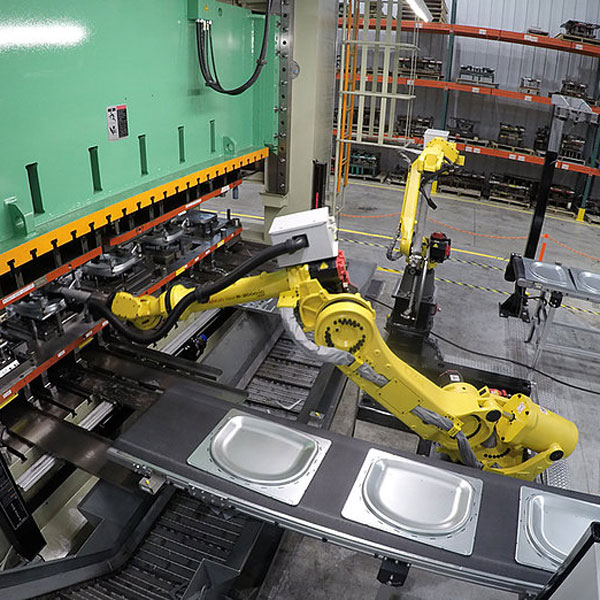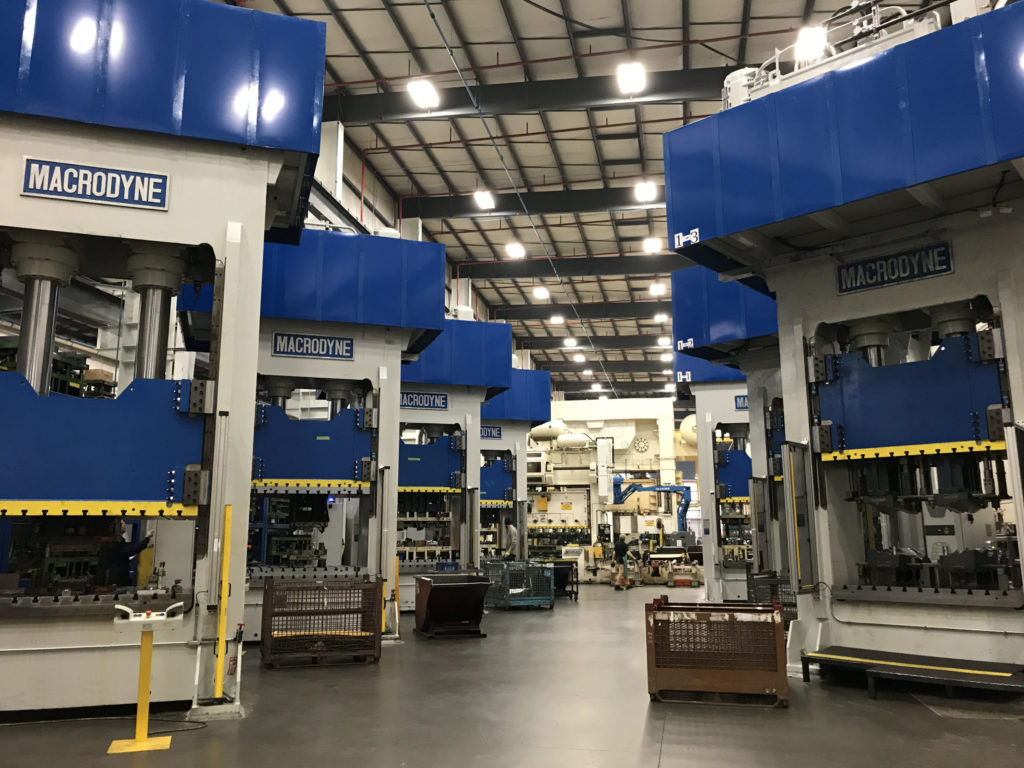Just How Metal Stamping Transforms Manufacturing Performance
Just How Metal Stamping Transforms Manufacturing Performance
Blog Article
Metal Marking Innovations: Elevating Manufacturing Processes for Superior Results
In the world of making processes, steel marking has long been a foundation technique for generating a variety of accuracy elements. With the unrelenting march of technical innovation, the landscape of steel stamping is going through a significant transformation.
Advancement of Steel Stamping Techniques

Additionally, innovations in material science have actually caused the development of high-strength alloys that can currently be perfectly marked right into complex shapes, dealing with a wider variety of industrial applications. The integration of robotics and expert system has further maximized the stamping procedure by improving speed and accuracy while reducing the danger of human error.

Impact of Advanced Materials
Have advanced materials changed steel stamping procedures considerably in the production sector? By utilizing materials such as high-strength alloys, progressed compounds, and cutting-edge layers, metal stamping processes can currently generate parts that are lighter, stronger, and extra long lasting than ever before.
These innovative materials provide exceptional mechanical residential or commercial properties, corrosion resistance, and thermal stability, enabling makers to fulfill the needs of modern-day industries such as aerospace, automobile, and electronics. Furthermore, the use of advanced materials in steel stamping has promoted the manufacturing of complex geometries and detailed styles that were previously unattainable with typical techniques.
Moreover, the execution of innovative products has caused minimized material waste, reduced manufacturing expenses, and much shorter preparations, making steel marking procedures more sustainable and economical. As technology remains to breakthrough, the influence of sophisticated materials on metal stamping processes is anticipated to drive additional advancement and enhance the competitiveness of manufacturers in the worldwide market.
Automation in Metal Stamping
The advancement of steel stamping processes driven by the integration of advanced products has actually set the stage for substantial improvements in automation within the manufacturing market. Automation in steel stamping has actually revolutionized manufacturing procedures, boosting performance, precision, and overall outcome top quality. With the application of robotics, sensors, and computer-controlled systems, jobs that were once hand-operated and lengthy can currently be executed with unparalleled speed and accuracy.
Automation in steel stamping not only accelerates production prices yet also ensures uniformity in the production procedure. By lessening human intervention, the danger of errors is substantially minimized, bring about greater levels of product uniformity and integrity. Additionally, automation makes it possible for manufacturers to embark on intricate marking jobs that would be challenging or not practical to achieve manually.
Furthermore, automation my sources in metal stamping contributes to a much safer working atmosphere by lowering the requirement for employees to participate in unsafe or recurring jobs - Metal Stamping. This shift towards automation not just enhances performance yet additionally leads the way for the future of manufacturing, where technology plays a central role in driving functional excellence
Quality Control and Inspection Systems
With a concentrate on precision and dependability, quality assurance and evaluation systems play a vital duty in guaranteeing item excellence in metal stamping procedures. These systems are developed to keep track of every stage of production, from material evaluation to the final item, to assure that all parts fulfill the called for requirements. By carrying out advanced innovations such as optical inspection systems, coordinate gauging machines (CMM), and automated determining devices, suppliers can spot even the smallest variances in measurements, surface area quality, and general stability of stamped parts.

Sustainability Practices in Metal Stamping
Structure upon the foundation of precision and integrity developed via quality assurance and assessment systems, the combination of check my reference lasting methods in steel marking procedures is significantly coming to be a centerpiece for suppliers seeking to minimize environmental effect and optimize resource application. Sustainability techniques in steel marking encompass a variety of campaigns focused on lowering waste generation, power usage, and greenhouse gas exhausts throughout the production process.
One secret facet of sustainability in metal stamping is the fostering of eco-friendly materials and innovations that advertise recyclability and waste reduction. By utilizing recycled products and applying energy-efficient machinery, manufacturers can decrease their carbon impact and add to a much more lasting production cycle. In addition, maximizing production procedures to decrease product waste and energy usage not only profits the setting but likewise brings about set you back financial savings for companies over time.
Furthermore, the application of lasting practices in steel stamping can improve brand name track record and appeal to ecologically aware consumers. As sustainability remains to acquire relevance in the production industry, incorporating eco-friendly initiatives right into steel marking procedures is vital for long-term success and competition in the market.
Conclusion
In conclusion, steel marking methods have actually substantially advanced article source gradually, integrating innovative materials and automation to improve making procedures. Quality assurance and assessment systems play an essential function in making sure exceptional results, while sustainability techniques are progressively being applied to decrease environmental influence. These innovations in steel stamping have changed the sector, resulting in extra sustainable and effective production methods for different markets.
Metal stamping, once a manual and labor-intensive process, has changed into a very automated and sophisticated approach of shaping steel sheets right into different forms and styles.Have innovative products changed metal marking procedures substantially in the manufacturing market? By using materials such as high-strength alloys, advanced compounds, and ingenious finishings, metal stamping processes can currently create components that are lighter, stronger, and much more durable than ever in the past.
The development of metal marking procedures driven by the assimilation of innovative products has established the phase for significant improvements in automation within the manufacturing sector.In final thought, steel stamping strategies have significantly advanced over time, integrating sophisticated materials and automation to improve making processes.
Report this page